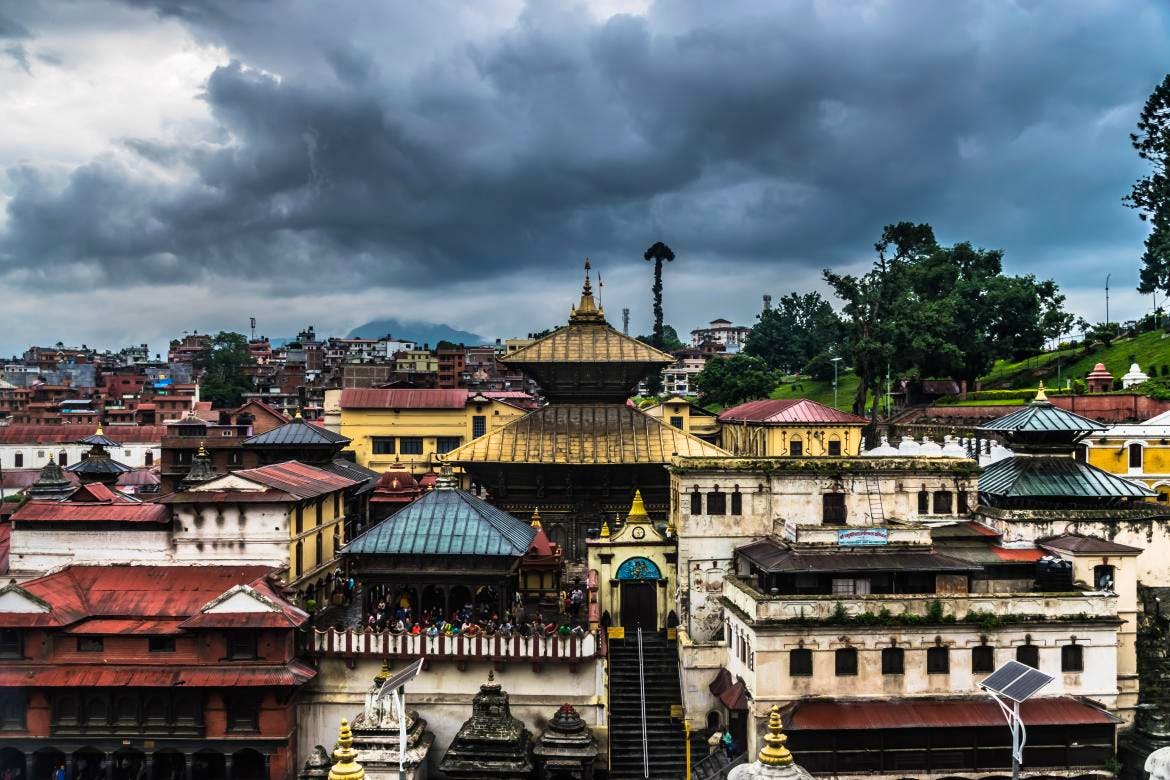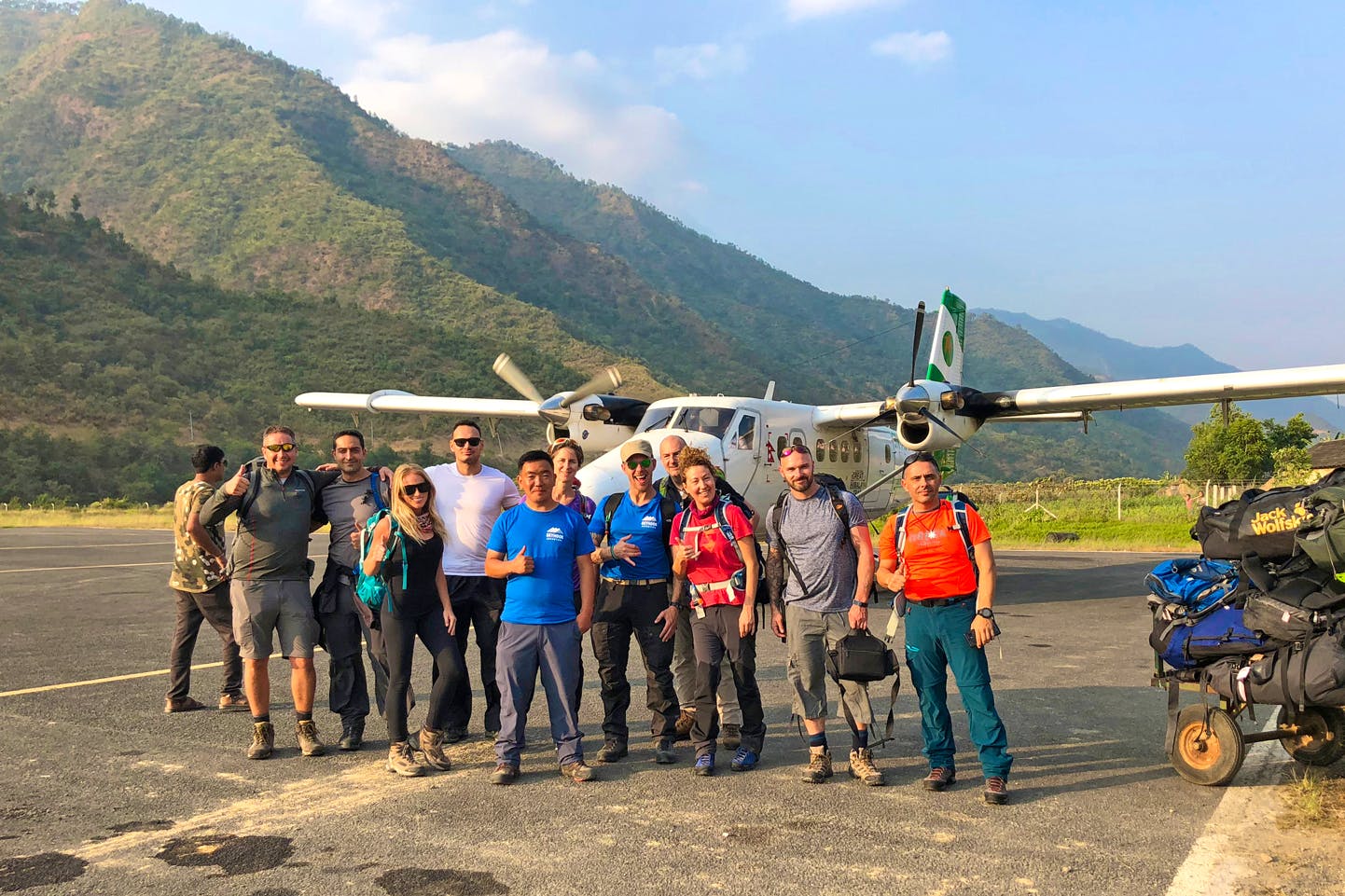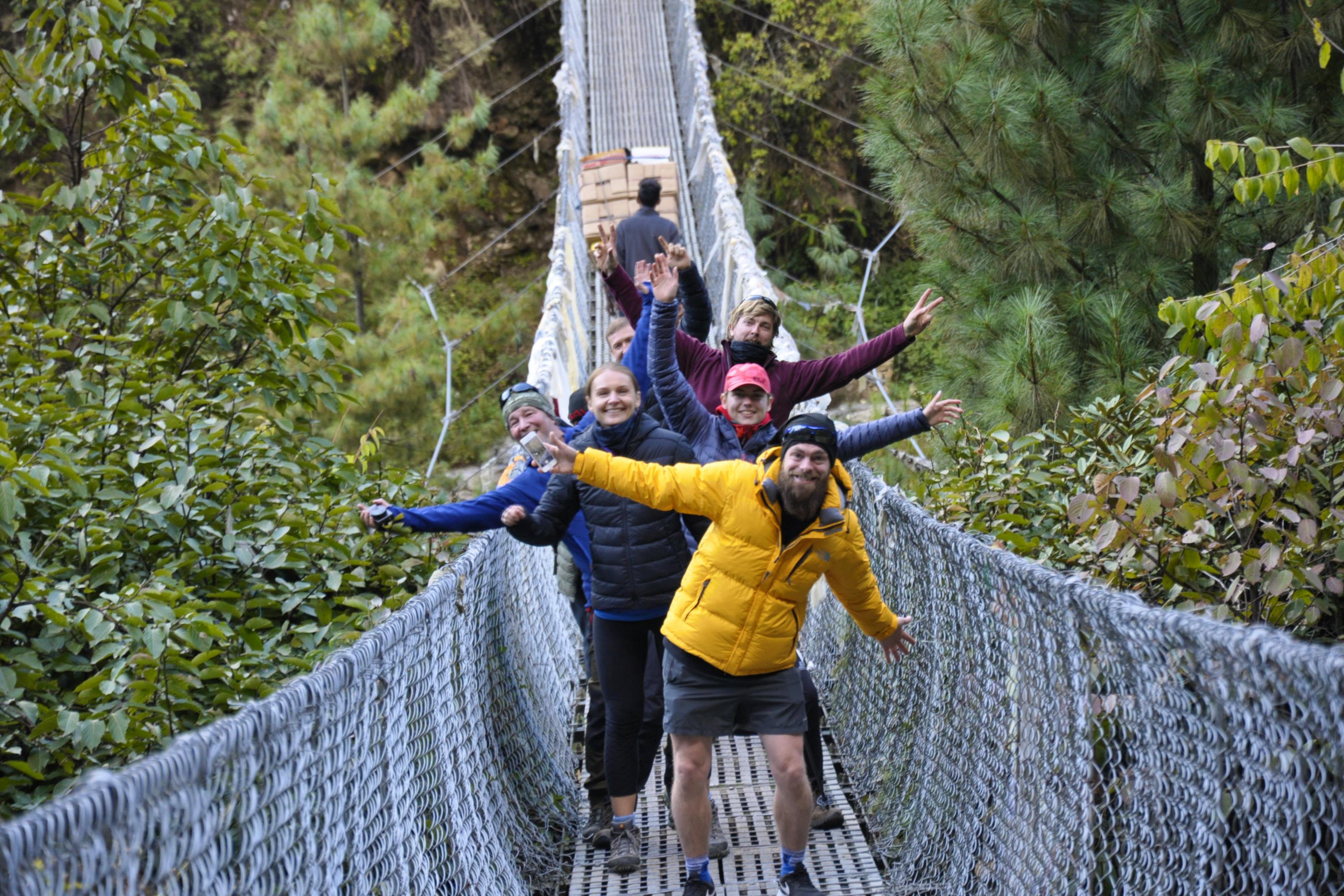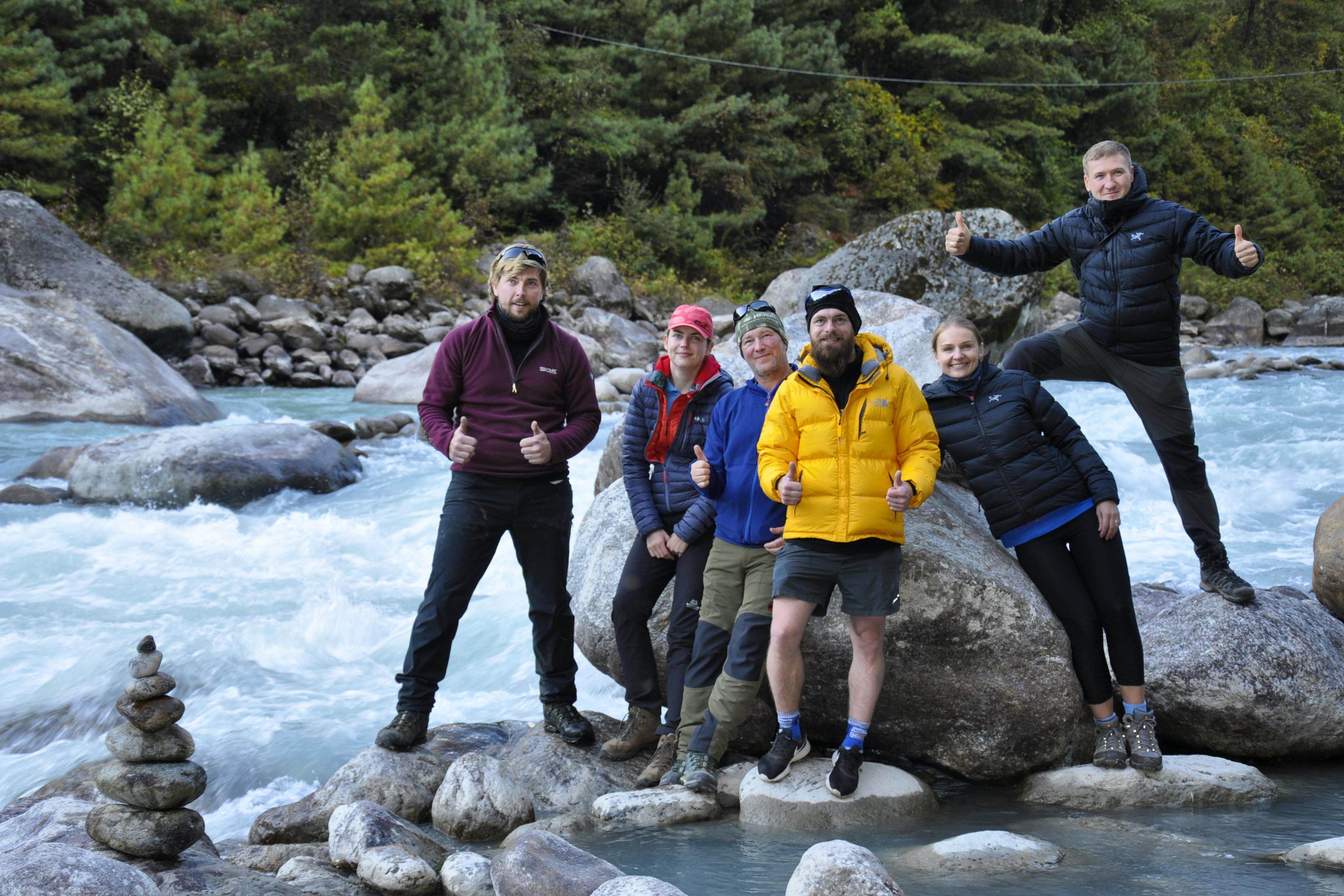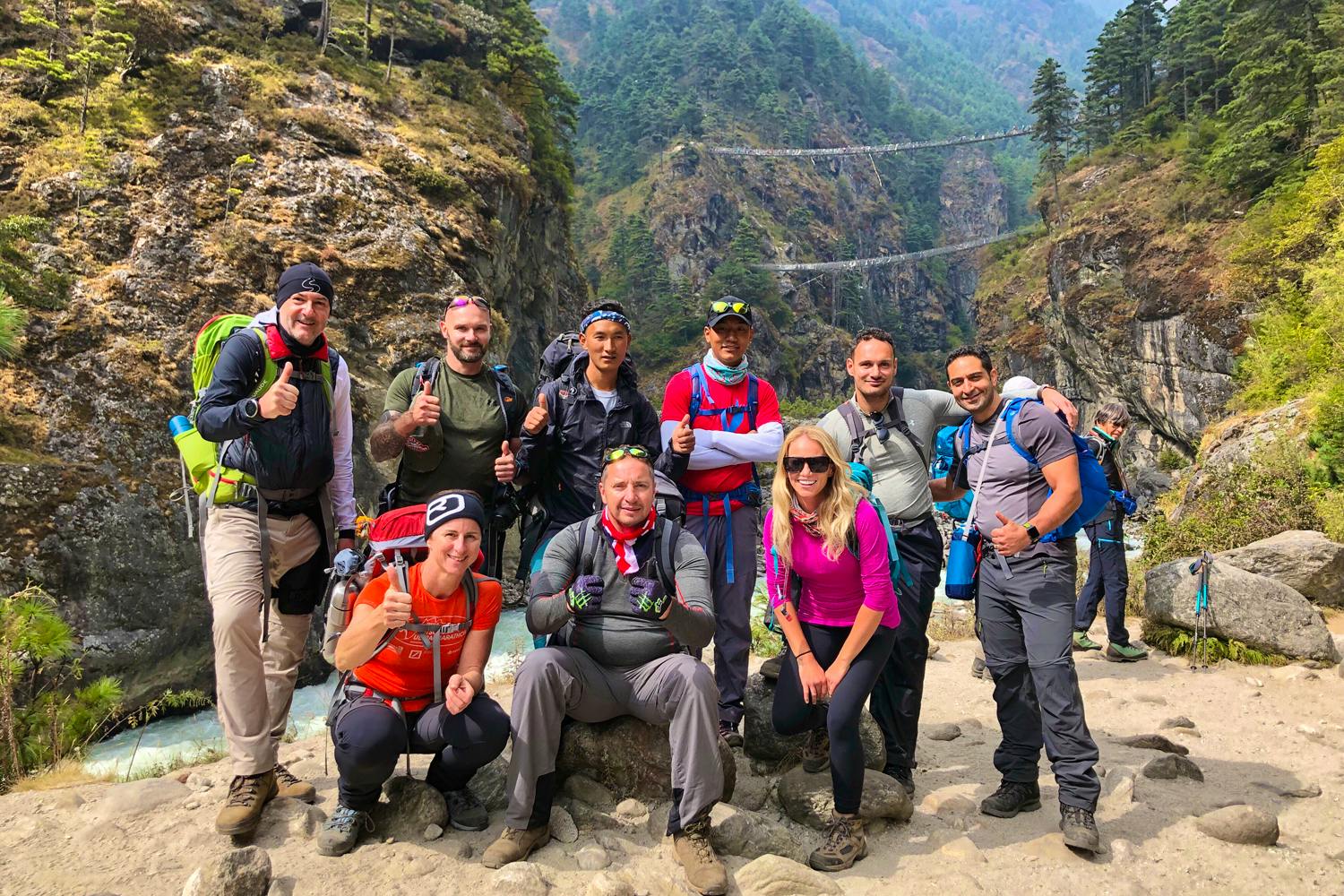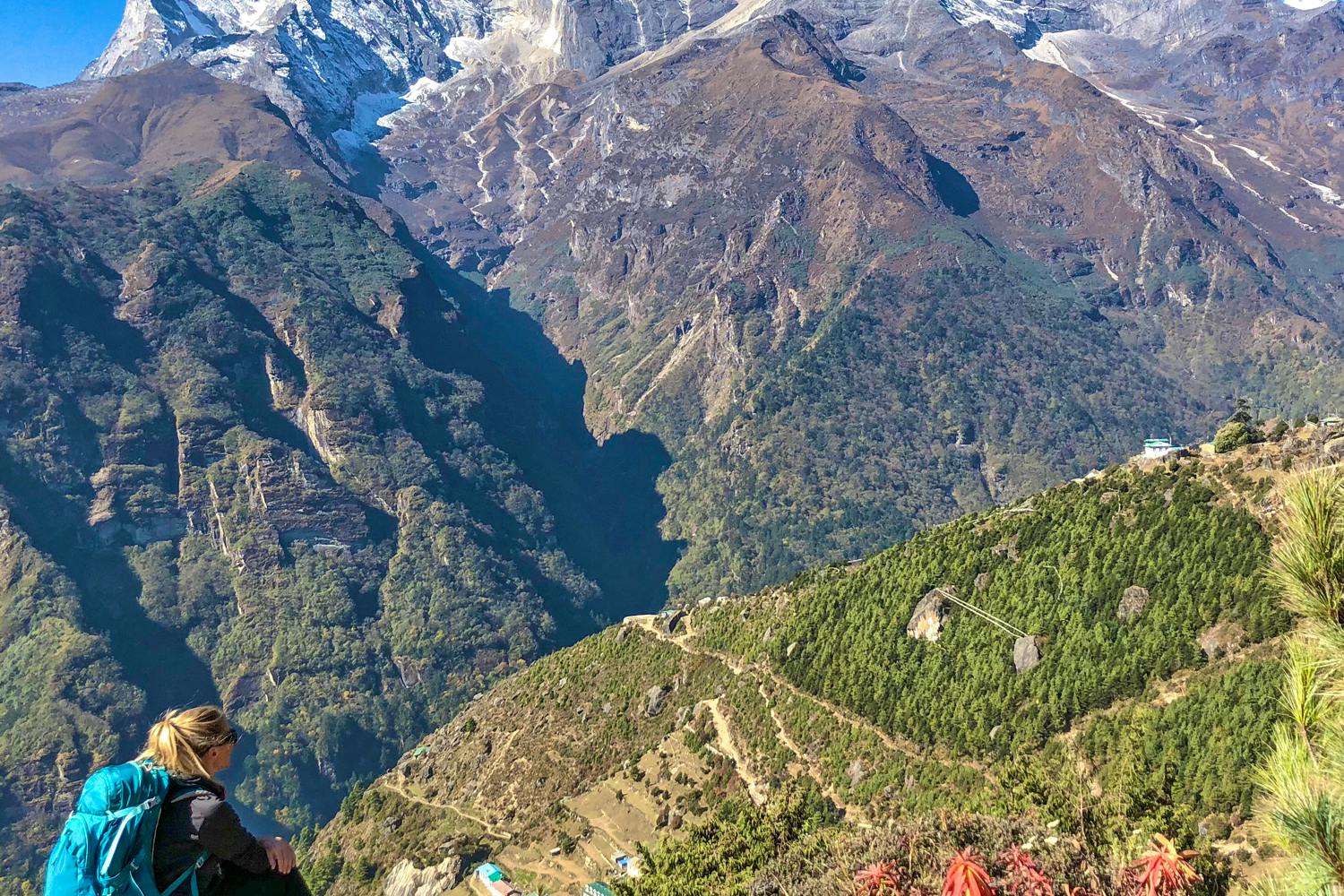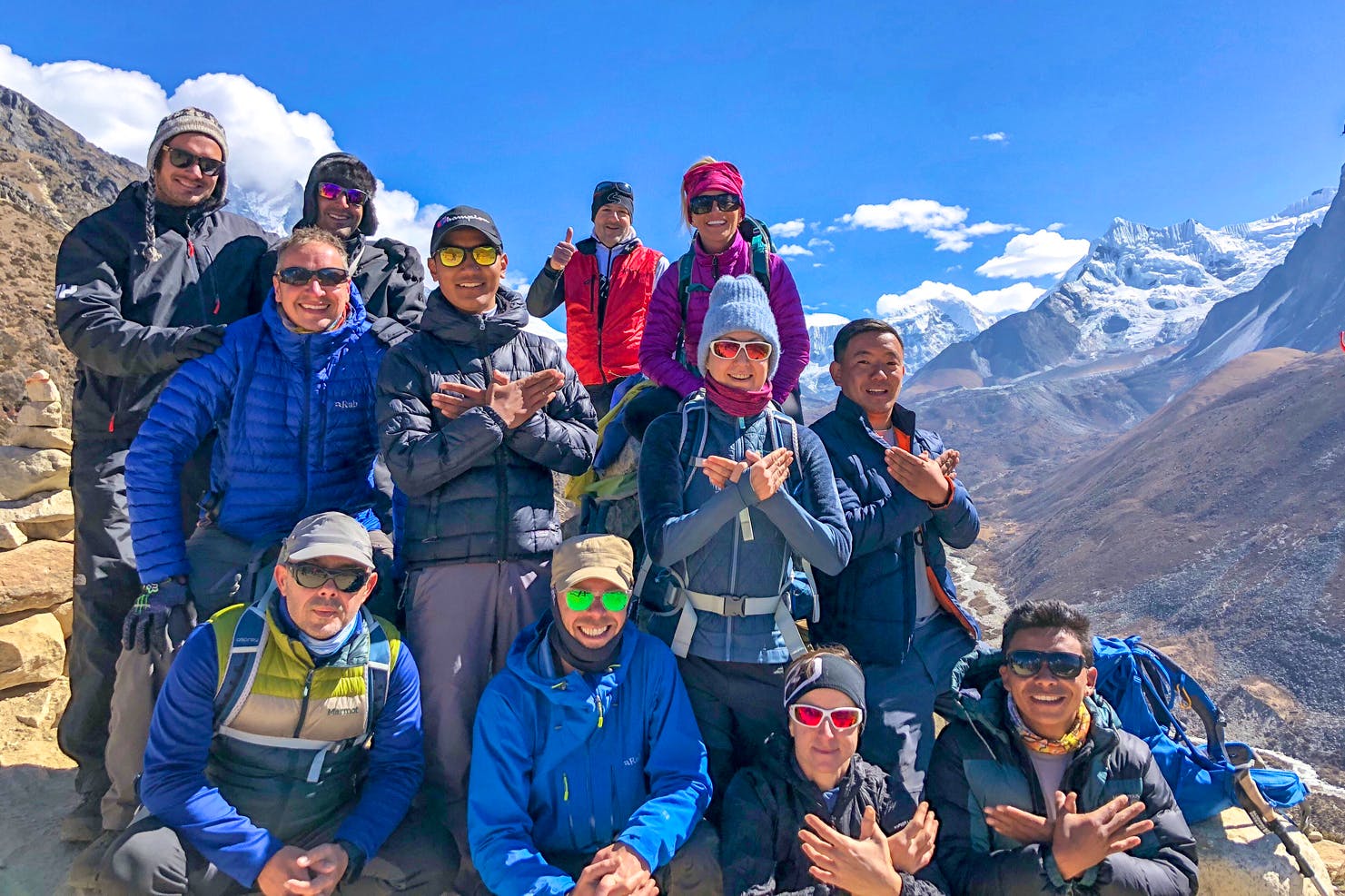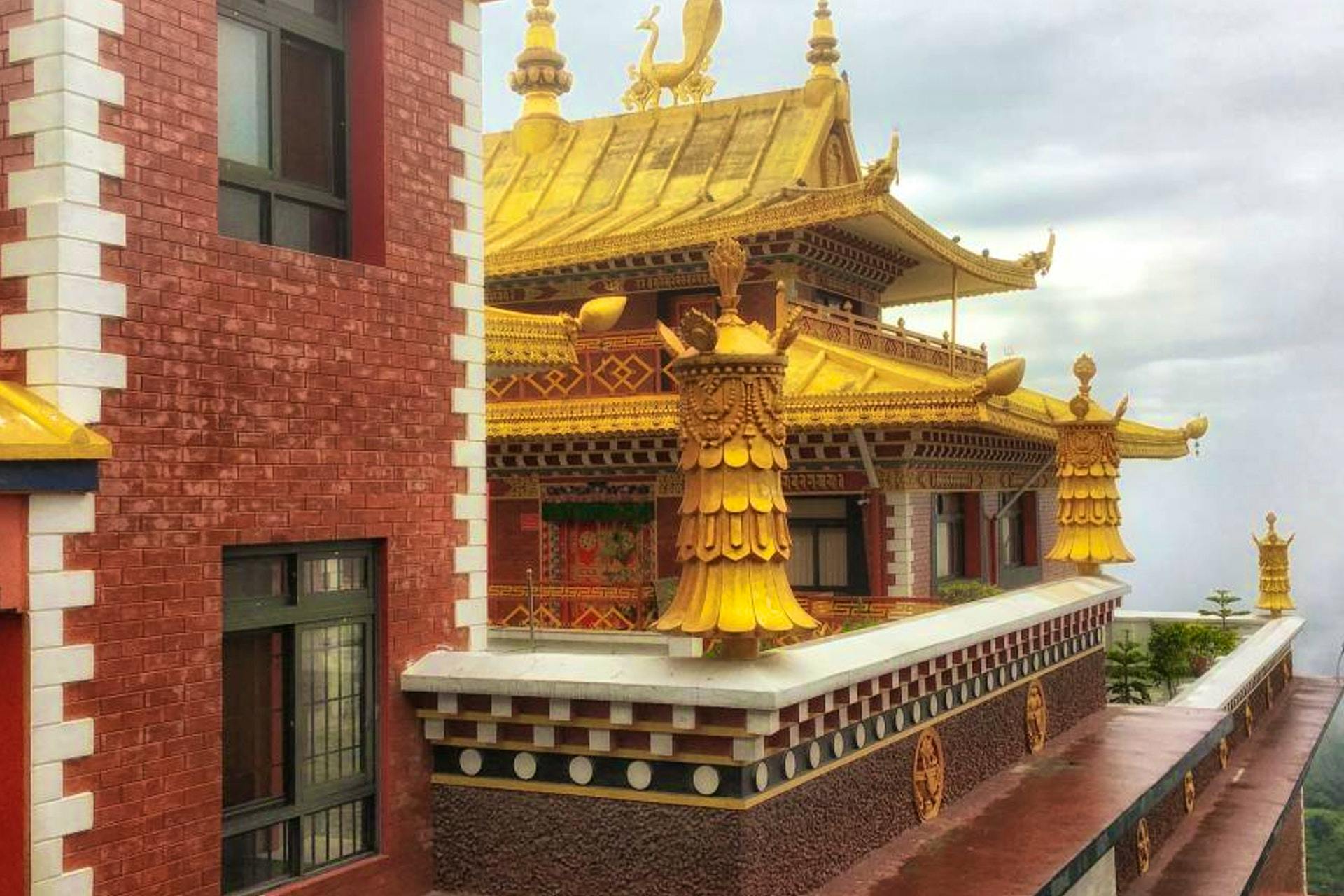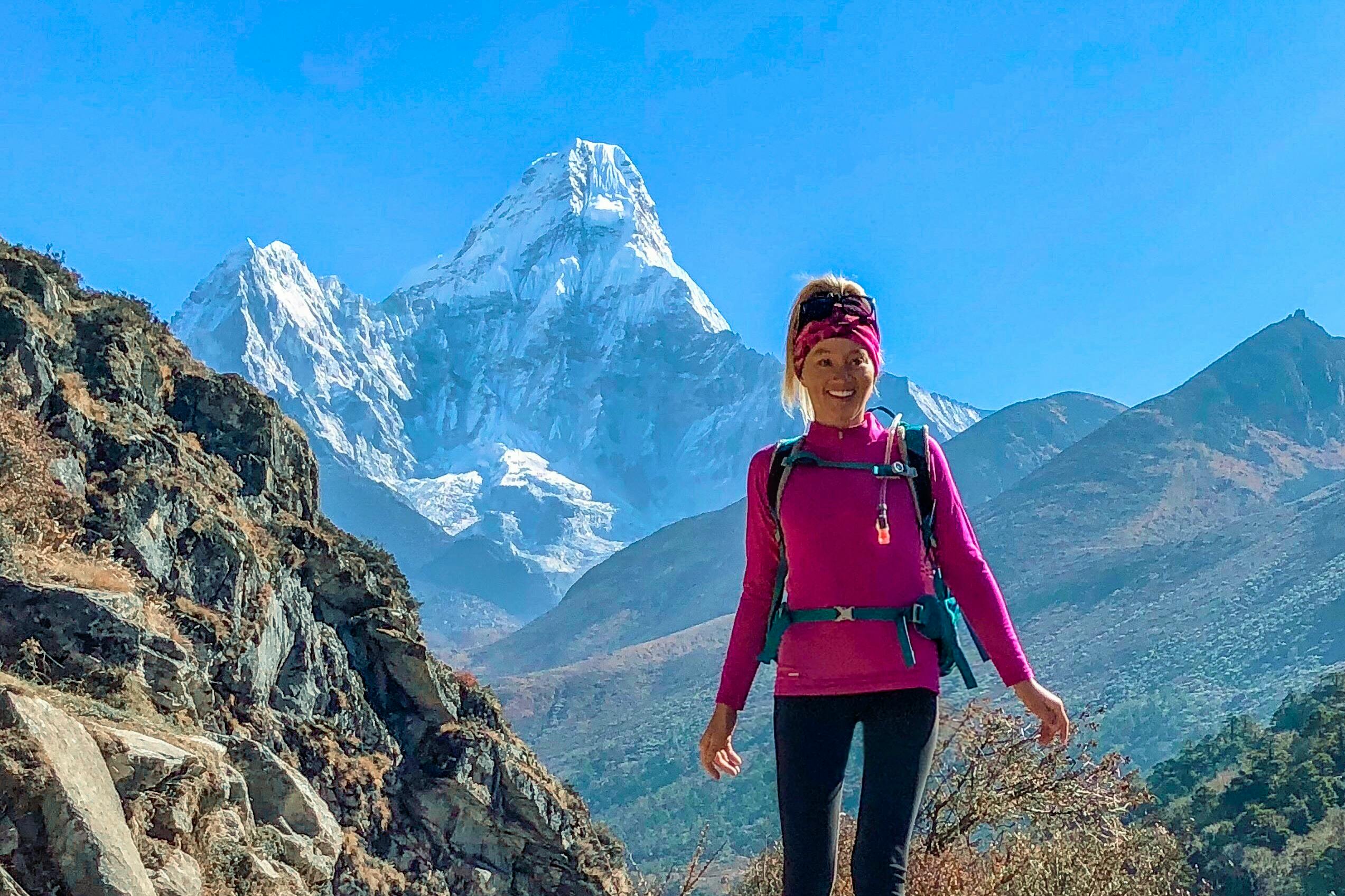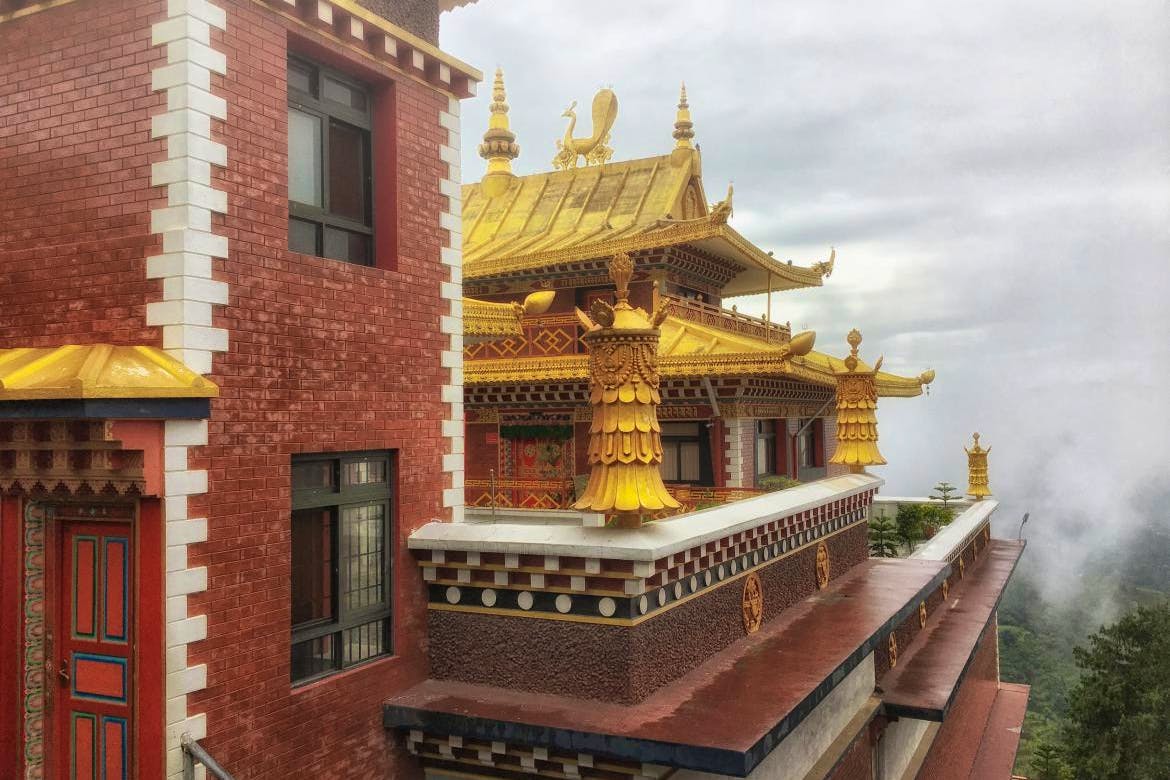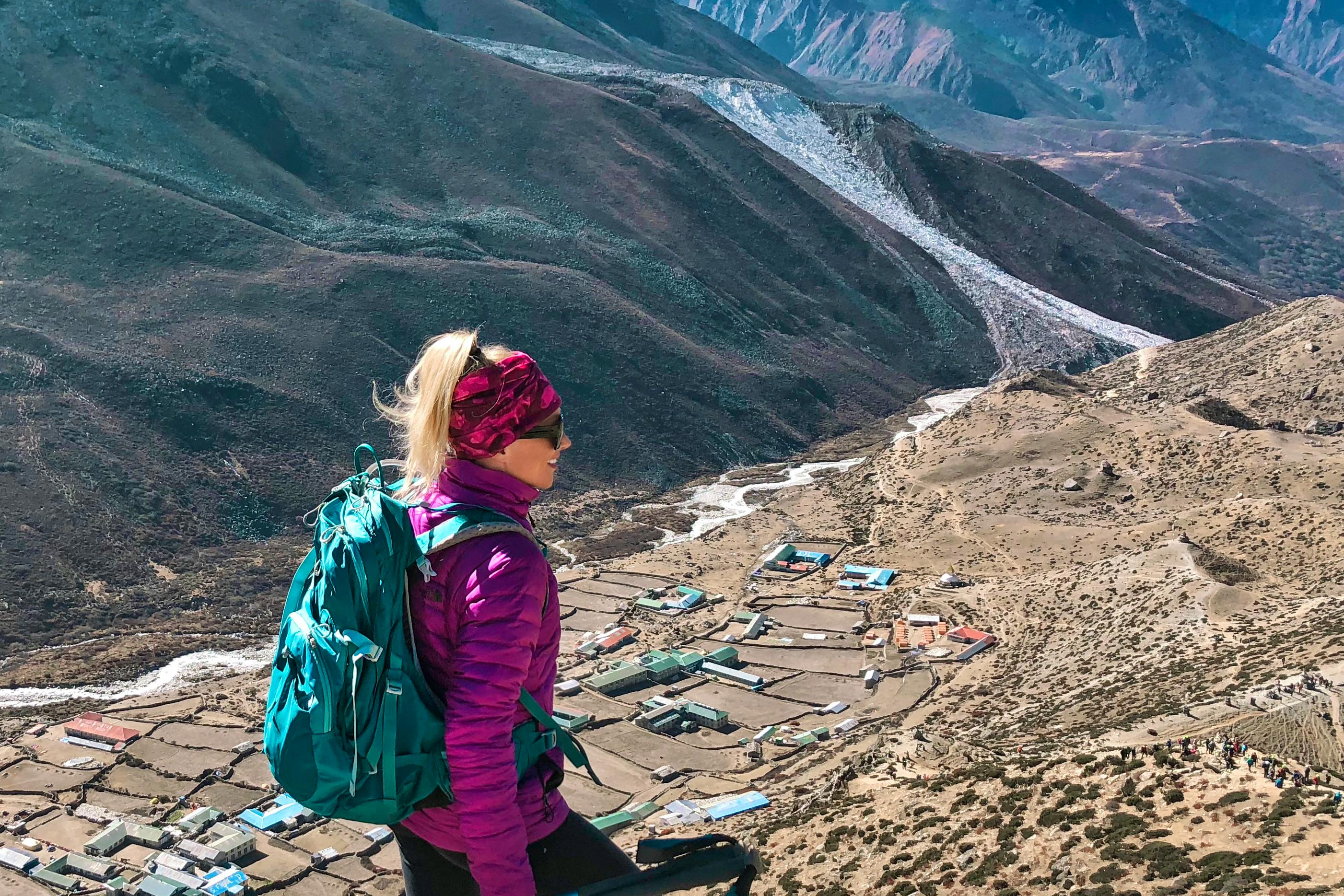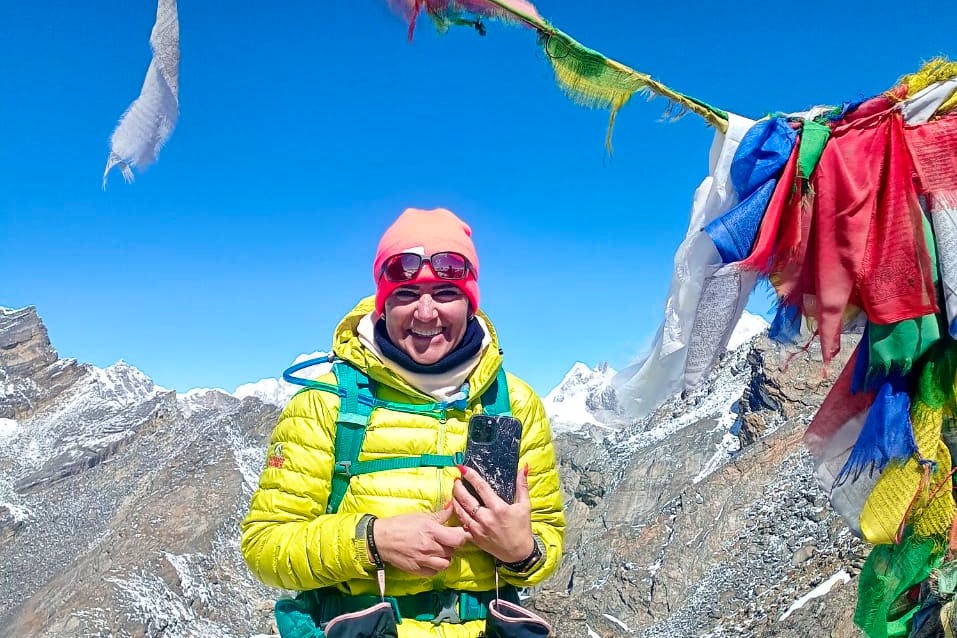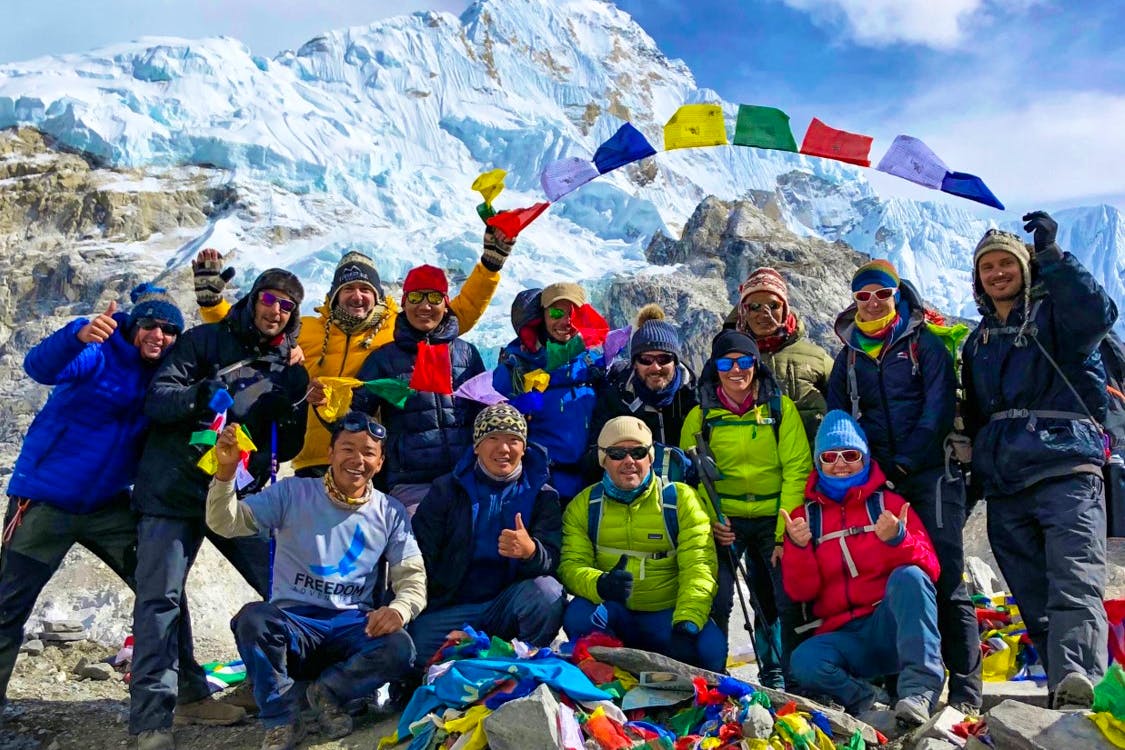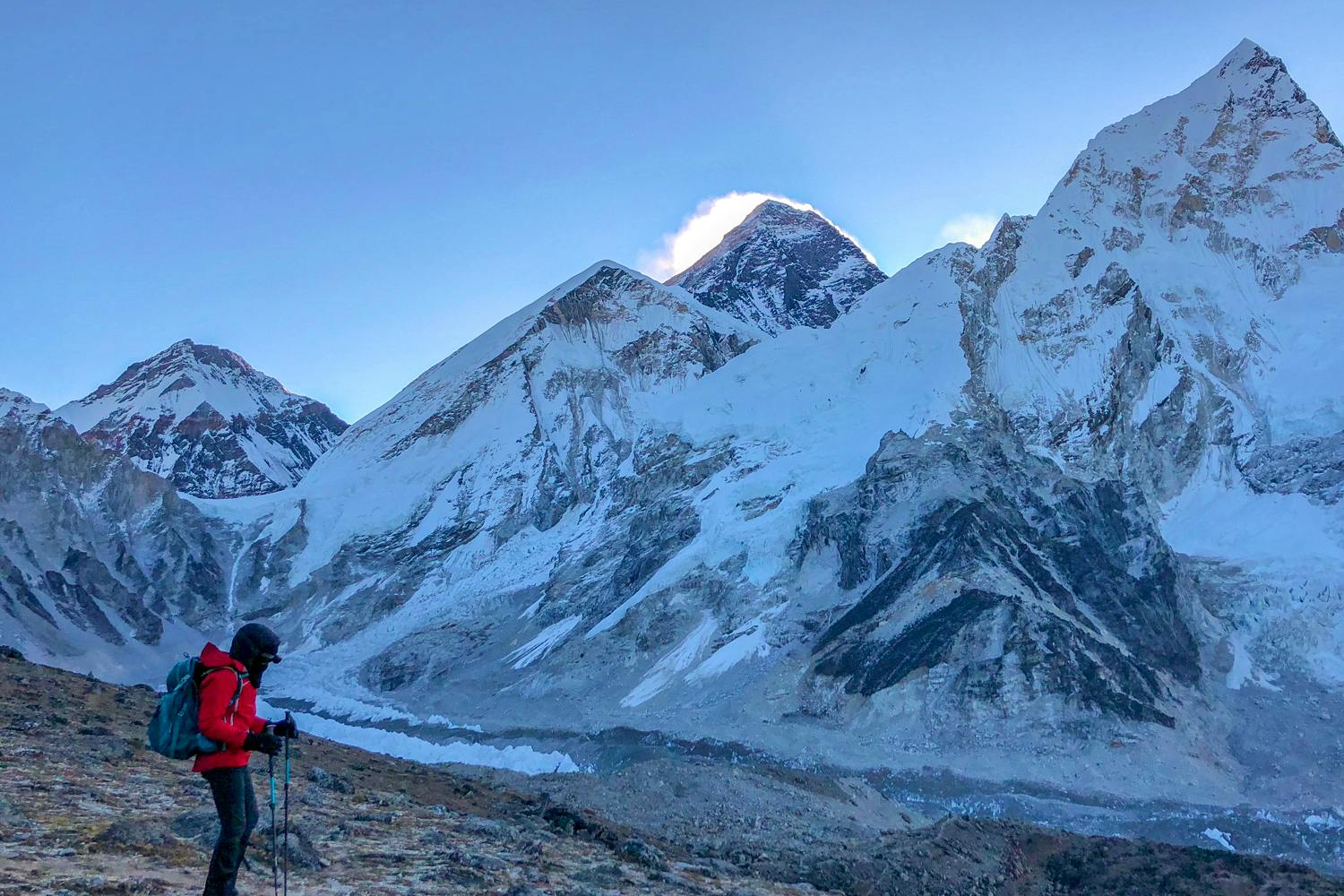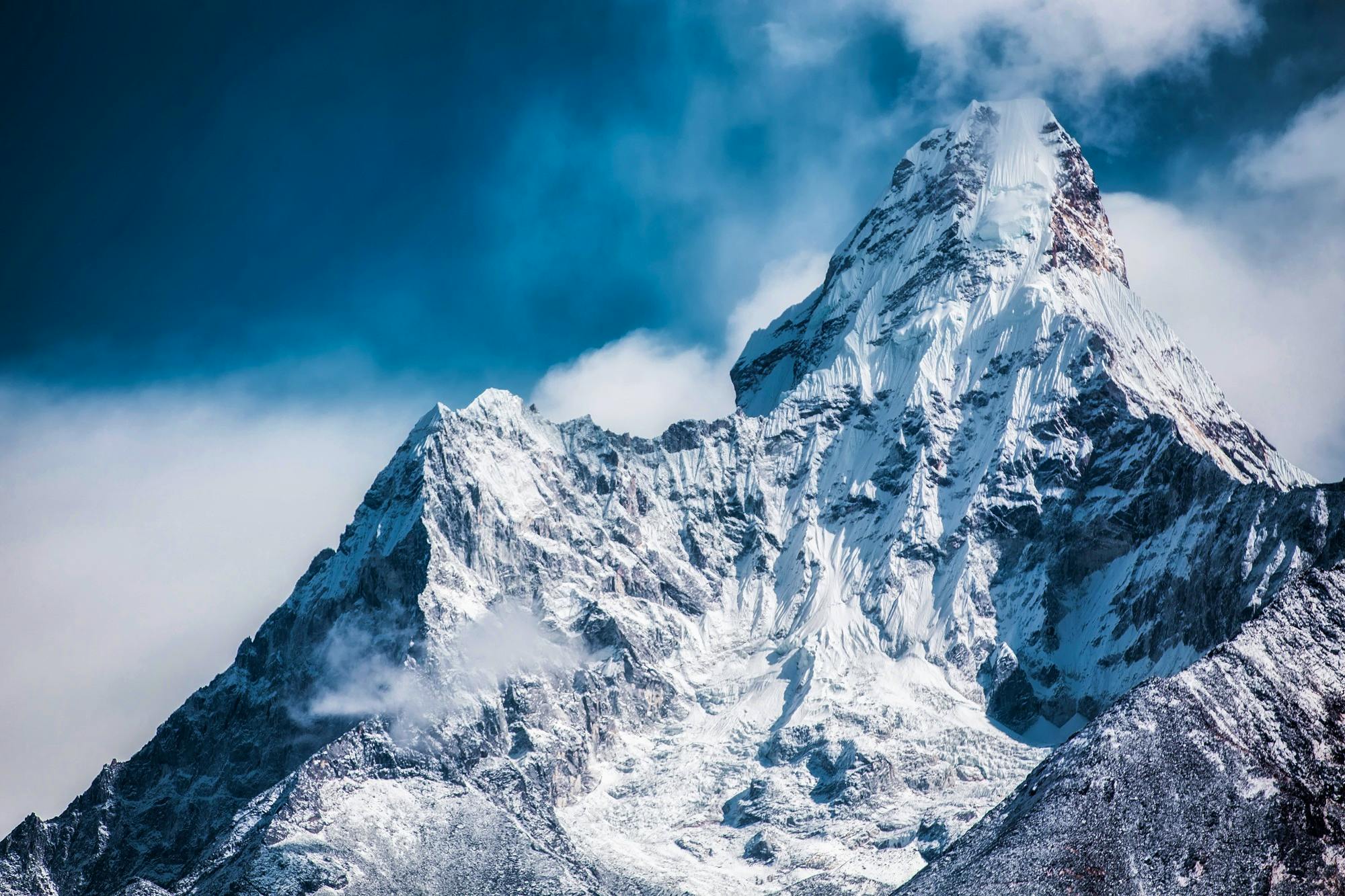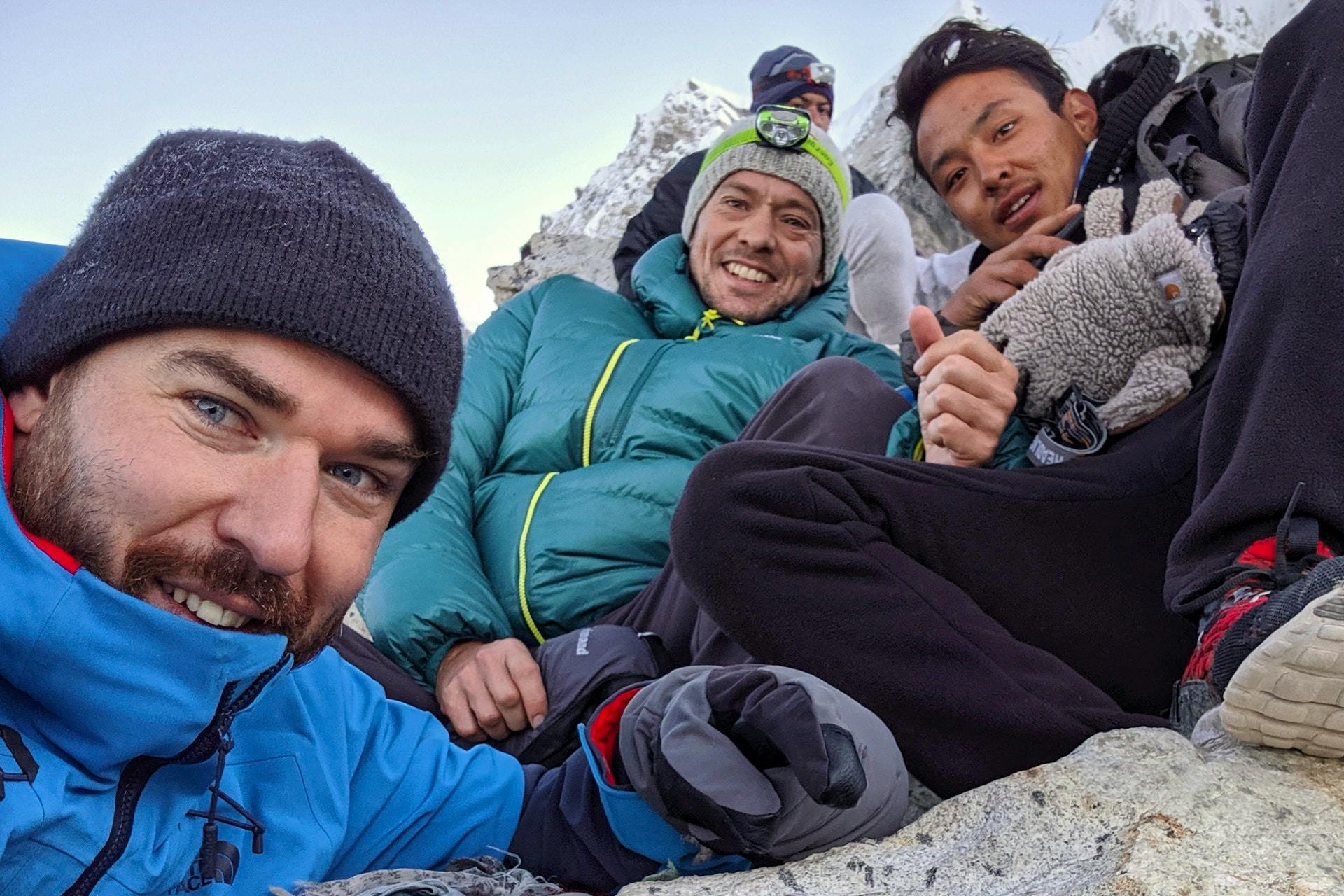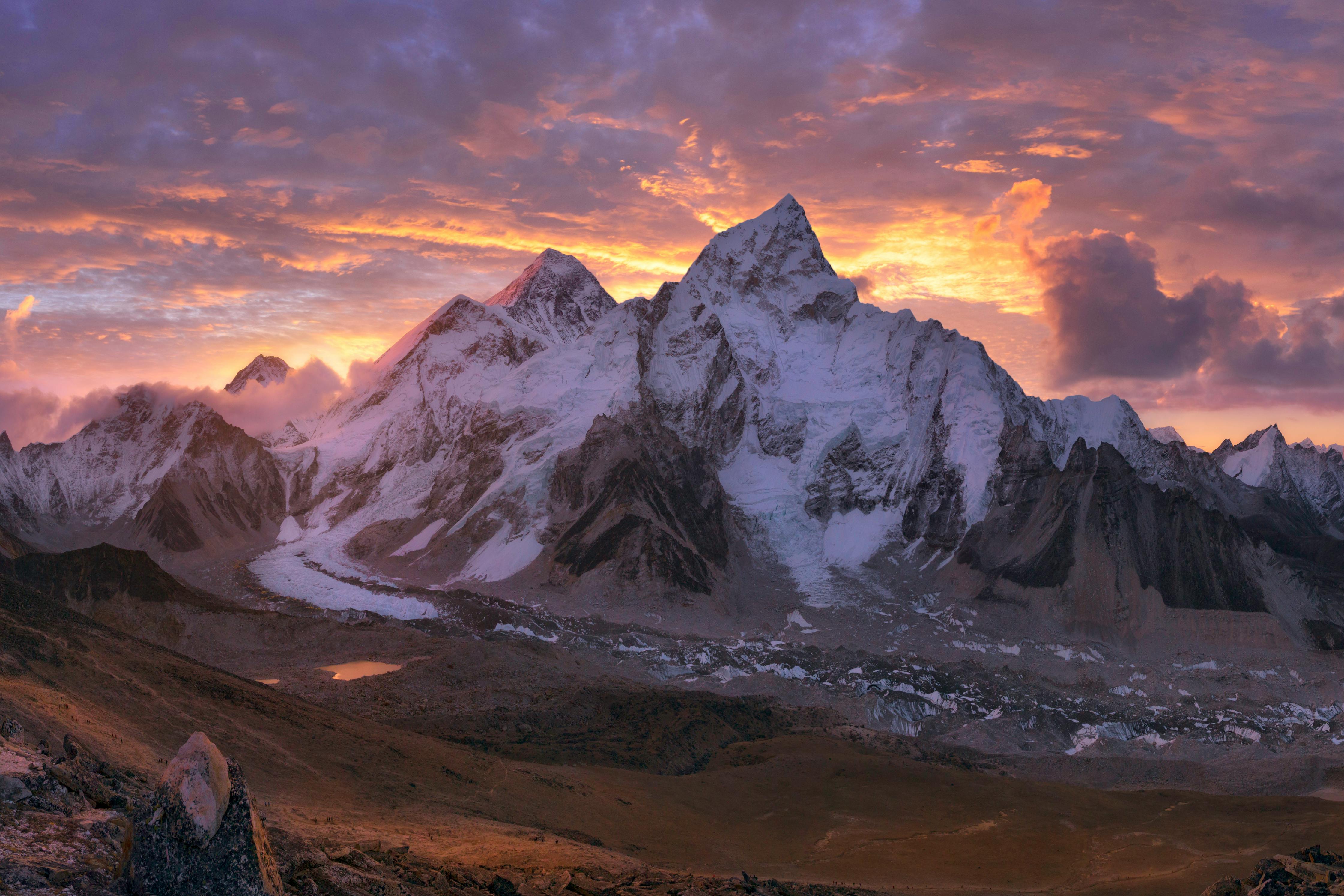Everest Base Camp Hike (16 Day Trip)


Follow in the footsteps of Edmund Hillary and Tenzing Norgay, to Everest Base Camp.
Itinerary
You’ll be picked up whenever you arrive at Kathmandu Airport and taken to your hotel. You are welcome to relax for a few hours or use the time to explore the Thamel district, renowned as a focal point for tourists in Kathmandu. In the evening we will have a welcome dinner with a full briefing preparing you for the days ahead.
Following a satisfying breakfast, we drive through the hills and valleys, departing from Kathmandu and heading for Ramechhap (Manthali), the gateway to Mount Everest. We will spend the night in a tented camp before catching our flight the next day.
This is the only night of camping on the trip. For the rest of the trip, you stay in tea houses or hotels.
From Ramechhap, you take an internal flight to Lukla (included). From here, you trek through the incredible Khumbu valley, to the small village of Phakding. This small village has a rich cultural heritage including a cluster of monasteries.
Today we continue along the Khumbu Valley to Namche Bazaar - the largest town on the trek. Along the way, you experience some breathtaking views overlooking the Dudh Kosi River. We will cross a series of suspension bridges, including the renowned Hillary Suspension Bridge, which offers a splendid vantage point for beholding the majestic Mt. Thamserku (6618 m). A formidable uphill
trek leads us to Namche Bazaar, where we get our first glimpse of Everest.
The air is very thin here – with just 65% of the oxygen at sea level – so this day is designated to taking it easier with short acclimatisation hikes so that you’re ready for the trail ahead.
We head to a panoramic viewpoint, affording breathtaking vistas of Mount Everest, Ama Dablam, Thamserku, and Lhotse. A stroll through the Khumjung Valley leads us to two significant sites of interest, namely, the Hillary School and the Khunde Hospital. Subsequently, we make our way back to Namche Bazaar, where we will spend the night.
The trail leads us in a northeastern direction through a tributary valley. The landscape transforms as we ascend the steep terrain towards Tengboche. This sanctified ground encompasses the Tengboche Monastery, the world's highest sacred institution of its kind.
Continuing our trek, we pass the renowned Gompa at Pangboche, which houses the famed Yetiscalp. Later we arrive at the summer yak pastures, offering a vivid glimpse into the lives of the Sherpa community. Our day concludes with an overnight stay in Dingboche, which is modest and mirrors the rugged surroundings.
Today you have optional excursions to Nagajun Hill or Chukung village. These side trips offer panoramic vistas of distinguished peaks, including Ama Dablam and Makalu, set amidst a landscape adorned with serene lakes and glistening glaciers. The day's experiences are designed to assist with adaptation to the altitude. We conclude the day with an overnight stay in Dingboche.
We carefully navigate the icy torrents that crisscross our path as we ascend to Lobuche. We will spend the night in this remote enclave where stone houses stand amid a captivating, frozen expanse.
Start the day by hiking to Gorak Shep, stopping for a short break before heading off to our ultimate destination, Everest Base Camp! We make our passage across the Khumbu Glacier, allowing us to stand in awe of the formidable Khumbu Icefall and the majestic South Face of Everest. Our ascent continues to Gorakshep, from where we trek to the Everest Base Camp. Here you can spend a few hours taking in the views and mountaineering history. before heading back to Gorakshep for the night.
Eager to witness the grandeur of Everest and its neighboring peaks we ascend to the ideal viewpoint at sunrise. It's an unforgettable spectacle as if the entire world lies before our eyes. Afterwards, we descend to the flat, sandy terrain of Gorakshep. Our journey then ascends once more, leading us to the summit of Kala Patthar (5,643m) the highest point on the trip. We conclude the day's trek with a descent to Pheriche, where we will spend the night.
Our journey continues, guiding us on a gradual descent to Tengboche. Along the way, we once again traverse the Dudh Koshi River, which had its origins as the Khumbu glacier. Leaving behind the pristine alpine meadows, our path leads us to the tranquil haven of Tengboche, where we will spend the night.
Our journey takes a downward trajectory as we descend to Phunke Tenga. We continue for a few more hours to reach Namche. In Namche, we'll pause for a period of relaxation and lunch, before embarking on the final leg of our day's trek to Monjo.
After a rejuvenating night in Monjo, our journey commences with a descent towards Lukla, where we will spend the night. En route, we traverse through the picturesque rhododendron forest and a Sherpa village. Upon reaching Lukla, we extend our final farewells to the local Sherpa team.
Today marks our departure from the Khumbu region, culminating in a flight from Lukla to Manthali and a drive back to Kathmandu. The return to the city signifies the conclusion of our journey, providing an opportune time for a celebratory dinner!
On the final day, we drop you off at Kathmandu airport ahead of your flight home.
Book Now
All trips are guaranteed to runSat 19 Apr 5:00PM Sun 4 May 12:00PM | $1,453.75 Based on $1,453.75 USD | Book 6 spaces |
Don't see your date? We may be able to open a new group or setup a private trip if there are 2 or more people in your party. Contact us.
You may also like: Everest Base Camp Trek (15 Days)
What's Included
Included
- Professional guides and porters.
- Transport (incl. airport transfers and internal flights to Lukla).
- Accommodation.
- Permits and national park fees.
- Sightseeing tour in Kathmandu.
- Water purification pills.
Not Included
- International flights to Kathmandu.
- Food: meals are available for purchase from the teahouses along the route.
- Warm showers in the tea houses (usually c.$4).
- Tips and gratuities.
- Visa to Nepal.
- Personal travel/rescue insurance (including emergency helicopter evacuation: $1,000).
Have a question?
If you have any questions about this trip or want to speak with an expert, get in touch.
We're ready to help.



Rated 5.0
60 verified reviews
Paul
(Nov 2024)
Brennan
(Nov 2024)
Matthew
(Nov 2024)
Vera
(Nov 2024)
Bradley
(Nov 2024)
FAQs
Before you go
Everest Base Camp requires you to trek at altitude for up to 8 hours per day, with a small 5-7kg rucksack. We recommended to train with long hikes and/or a sport of your choice (e.g. jogging).
Please see the section above for trip inclusions and exclusions.
Documents: • Passport • Travel insurance details • Boarding passes for flights • Cash USD • Credit/Debit Card (ensure you have $500 on your card in case an emergency helicopter evacuation is needed) Sleeping: • Sleeping bag • Sleeping bag liner (optional) Footwear: • Trekking boots: 3 or 4-season lightweight • City footwear (e.g. sandals) • Shoes for the plane and tea houses (optional) Clothing: • Base-layer t-shirts (e.g. running t-shirts) • Fleece/windproof jacket • Waterproof jacket • Down jacket for warmth • Travel clothes and city wear • Underwear • Base-layer trousers (optional) • Waterproof trousers • Trekking trousers • Trekking shorts (optional) • Thick wool mountaineering socks • Lightweight and breathable trekking socks • Gloves and wool hat *Please make sure that you have non-cotton clothing for trekking. Other: • A daysack: 35 litres • A duffel or rucksack with straps to go over your back (max 8kg of weight for porters to carry) • Dry liner or dry bag • Water bottle/thermos: At least 2L worth (we recommend Nalgene bottles). • Sunglasses • Suncream • Personal medication – inhaler, blister pads etc • General toiletries, contact lenses, glasses (if needed) • Towel • Electronics - head torch, travel adaptor, phone & charger • Lipsil • Book • Headphones • Travel wash • Hand sanitiser, wet wipes
The currency used in Nepal is Nepalese Rupees (NPR). You are unable to get NPR outside of Nepal, and therefore you will need to get it when you arrive. Most people withdraw money from ATMs while in Kathmandu. Please check with your bank in advance that they allow withdrawals/transactions. Ideally bring 2 cards to be safe. Alternatively, you can bring US dollars (or euros) and exchange them on arrival. It's recommended to exchange currency at the hotel, you'll get a better rate than at the airport. Please Note: If using your card directly in Nepal, then you will often be charged a 4% service charge. Many places outside of Kathmandu and in the mountains will not accept cards, so it's important to take out cash in Kathmandu for the trek.
Currently, all foreign nationals (except Indians) require a visa to enter Nepal. Visas are obtainable from embassies abroad or on arrival at Kathmandu's Airport. If getting the visa at the airport, be prepared for long queues. You will also need to pay US$30 for 15 days and $50 for 30 days visa. For a smooth immigration experience, please make sure to carry the visa fee in cash.
Yes! It’s highly recommended you take out personal travel insurance. Travel cover protects you in the case of unforeseen circumstances including cancellations, injuries, equipment loss, flight changes and other events that could negatively impact your trip. For EBC, travel insurance should also cover emergency helicopter evacuation. We suggest looking into specialist adventure travel insurers like [Rise & Shield](https://riseandshield.com/). They cover 100s of activities and are easy to deal with if you need to make a claim. They also cover unique scenarios, like trekking at altitude or emergency evacuation in hard-to-reach places, that ordinary travel insurance doesn’t cover.
On your trip
You stay in hotels in the city of Kathmandu and tea houses while on the trek. The hotel will be 3 stars, and you stay in a twin shared room. A single supplement is available if you want your own room (you can request this on your trip form after booking). The hotel has showers and intermittent internet access. The teahouses are in remote locations and are very basic. Some of them have squat-style toilets, and the showers do not always offer warm water. Most tea houses will charge a small fee for hot showers (between 500-700 rupees) Meals are available from all tea houses, but please be aware that the food has been carried up there by porters, so it becomes a little more expensive as you get closer to base camp. Some tea houses do have access to the internet for a small fee (300-500 rupees), but it can be slow and unreliable.
It is customary in Nepal to tip guides and porters. You can give any tips to your lead guide at the end of your trip, which will then be shared with the whole team. As part of our transparency initiative, the lead guide will distribute the tips to the guides and porters in your presence. A good rule of thumb is to budget around US$150 in total for tips, although the amount you give is entirely your choice.
To be sure that you make your trek or return from it, it may be necessary to make the flight to/from Lukla by a chartered helicopter. Helicopters can operate in some weather that aircraft cannot. Helicopters can cost upwards of $600 per person and are not covered as part of this trip package. You may need a helicopter flight if it is not possible to safely trek back from Base Camp or, if internal flights are cancelled and you need to get back to Kathmandu in time to make your international return flight. In the rare case that a helicopter is needed, it will be at the expense of the travellers and can cost around $600/person. Please make sure you have travel insurance, and we recommend speaking to them to check they cover this scenario. While weather delays do occur, they're usually temporary. The norm is to simply wait for a later flight time. If a helicopter does become a more viable option, a collective decision will be made by the group on how to proceed.
The porters will carry up to 8kg for you, in accordance with recommended safe loads.
The average group size is 12 people, with a maximum of 14 people.
Yes - there is far less oxygen as you get to higher altitudes on the trek. For most people, this means that you will find trekking more challenging, and the guides will set a slower pace to adjust for this. The itinerary is designed to allow plenty of time for your body to acclimatise, with several rest days. However, everyone reacts to altitude differently, and it is possible that you will experience some symptoms of altitude sickness (e.g. headaches or nausea). The guides are trained in high-altitude first aid and will also ask you to let them know if you experience any symptoms. In extreme cases, altitude sickness can prevent you from continuing your trek, and in this case, the guides can arrange for you to descend quickly (by foot or by helicopter). Your safety is always the number one priority.
The weather can change rapidly, and the guides may be forced to change the trip itinerary accordingly. Travellers need to be prepared for all weather conditions. For more information, please read the kit list provided. Low Season (End Nov - March) Daytime temperatures will be cooler, and the nights will be very cold. The days can bring winter storms, with regular snowfall above 2500m. Domestic flights are difficult at this time of year. Monsoon (Jun – Mid Sep) Temperatures are hot, with heavy rainfall almost every day. Trails can be very muddy, with frequent thunderstorms and high winds. Trekking season (End Mar-May & Mid Sep – End Nov) The most popular time to trek with mild – warm days and cold nights. The mornings tend to be clear, with some short rainfall in the late afternoons. In the higher altitudes, the temperatures often drop below freezing in the evening. At Everest Base Camp, the temperatures can drop as low as -15°C.
You can arrive at any time on the start date of your trip, and we'll pick you up from the airport. We recommend you fly out on the afternoon of the last date of your trip, as the internal flights the day before can be delayed in poor weather. It will be even better if you can add one or two days in Kathmandu before and after your trek. This will add some more flexibility in the event of weather-caused flight delays. You can see the itinerary on your dashboard after booking, with the specific dates for your trip. Note: In the event of flight cancellations, a helicopter flight back to Kathmandu is often possible. This will be at your own expense. Please make sure you are insured and that your insurance covers flight cancellations and helicopter evacuations in Nepal.
When traveling in countries such as Nepal, it's important to maintain vigilance with hygiene and food safety. Bring plenty of hand sanitiser. It may be a good idea to consider going vegetarian when you are trekking to Everest Base Camp. It is not uncommon for meat to be carried up to the Tea Houses for a few days in the hot sun.
Your accommodation will be arranged in a 3-Star hotel: Hotel Holy Himalaya or similar in Thamel, the tourist hub of Kathmandu.
Flights go from Ramechhap to Lukla. Because of the ever-changing weather, your internal flight may be cancelled or delayed for safety reasons. In this instance, your guides will book you onto the next available and safe flight at no extra cost. You will, however, be required to pay for accommodation at the hotel for any additional nights not noted on the itinerary. So we recommend having travel insurance that covers delayed flights. The internal flight is included in the cost of your trip. It is important that you provide your passport information after booking, which you can do in your trip form, so that we can book the internal flights for you. Internal flight tickets are issued locally and will be given to you prior to the flight departure. In the event that the flights are cancelled on days 3 and 4 of your itinerary and no helicopters are available, it will not be possible for you to ascend to Everest Base Camp safely and with the required acclimatisation stops. In the unlikely event that the above does happen, the group will be taken on the Annapurna Base Camp trek, which requires no internal flights. Annapurna Base Camp is also a 16-day itinerary which reaches a maximum altitude of 4,130m, starting in the beautiful city of Pokhara.
Any extra luggage that you are not taking with you on the trek can be stored at your hotel free of charge.
While on the trek, you have a few options for water. You can buy bottled water from the tea houses, or you can fill up from the tap. If filling up from the tap, be sure to use the free purification tablets. These will be provided by your guide. Bottled water can be quite expensive to buy (up to 100-150 rupees), the price increases as you trek higher.
Meals and snacks are not included. You can purchase food from the teahouses along the route. There's generally a good variety of meal options. We recommend sticking to vegetarian options while you trek, to avoid risking an upset stomach. Meals in the tea houses cost about 600-900 rupees ($5-$7). Hot drinks from 150-300 rupees ($1-$2.5). We recommend you allow US$500-800 for food on the trek.
Other FAQs
You can see the latest NHS advice at https://www.fitfortravel.nhs.uk/destinations/asia-east/nepal
The minimum age for this trek is 18 years, or 16 years with a parent/guardian.
Many different ethnic groups coexist in Nepal, and as a foreigner you may be an object of curiosity. You may find that in certain places, the locals will want to talk to you or take pictures with you. You will almost certainly be subject to a bit of hustle and hassle in Nepal, getting a dose of it immediately when you arrive in the airport. Nepal has a haggling culture, with almost every monetary transaction (outside of hotels and restaurants etc) involving haggling. It is likely that you will see beggars in Kathmandu. This can include children. Please be vigilant with your valuables, especially when in the city.
Yes! There are multiple places to rent trekking gear in Kathmandu. If you need to hire equipment, we offer assistance to source rental gear when you arrive. Generally, prices are as follows; - Sleeping bags, down jackets, and duffel bags: around $2 USD per day. - Trekking Poles; around $1 USD per day. Please send us a message if you have more questions about renting gear.
Your head guide is Jagan
All trips on Skyhook are run by small, hand-picked local guiding companies. For this trip you'll be led by Jagan and the guiding team based in Pokhara.
By booking through Skyhook you'll be joining a small-group trip. This can make it nice and sociable (you'll be added to a group chat after booking), and guarantees great value for money!

Why Skyhook?
Join over 27,000 Skyhook adventurers who've used our platform to book directly with our vetted local guides, at local prices (we never markup).
Expert Local Guides
Experienced local guides, handpicked by us.
Best Prices
Never pay a markup on the local guide's price.
Exclusive Club
Earn loyalty rewards every time you travel.
Great Social Vibes
Small group tours provide a richer experience.
Stellar Feedback
Over 2,800 reviews, average of 4.9/5 stars.
